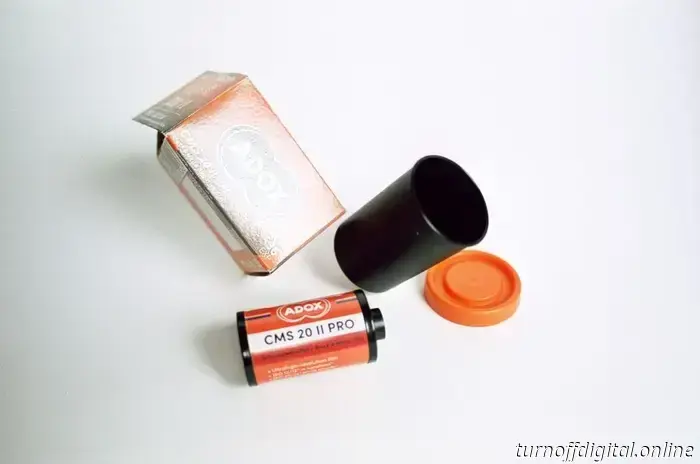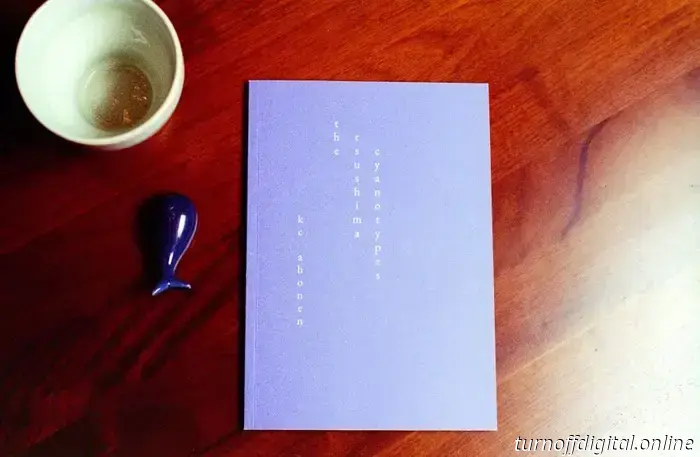
Adox CMS 20 II is claimed to be the “highest resolving image recording system in the world.”¹ According to the manufacturer, this 35mm film can produce images of up to 500 megapixels when scanned, surpassing even the most advanced full-frame digital cameras. However, it requires a specialized developer to achieve a usable dynamic range; otherwise, the resulting photos may exhibit extreme contrast. In this review, I will discuss my experience shooting and processing this film with the dedicated Adotech CMS IV developer and the more conventional Ilford DD-X, explore its technical specifications, and reveal the results of my attempt to create a 400-megapixel scan, which is the maximum my current hardware and software can handle. This review will cover topics such as grain, resolution, sharpness, the 400-megapixel output from 35mm film, dynamic range, developing with Adotech IV, scanning and editing, manufacturing delays, and pricing information for Adox CMS 20 II. Support this blog and access premium features through GOLD memberships!¹ — This is a quote from the Adox website, which also notes a resolution of up to 800 l/mm and 500 megapixels for each 35mm/full frame.
Adox CMS 20 II @ EI 20 with Adotech IV and Nikon Nikkor 28mm 𝒇3.5 AI-S.
Grain, resolution, sharpness:
Regardless of the developer used, CMS 20 appears nearly grain-free in all but the finest scans. On smaller screens and prints, it can be challenging to determine whether the images were created with a modern high-resolution sensor or derived from an emulsion. However, as this is still a physical medium, close-up shots may reveal some texture — indicative of dust or less-than-ideal development techniques.
A close-up of the photograph above (approximately 5x crop). Scanned with the Nikon Super Coolscan 5000ED at the maximum resolution of 4K DPI. The slight lack of sharpness is attributable to the vintage lens being used at its widest aperture. Additionally, I noticed that adjusting the exposure during post-processing could make those imperfections a little more evident, manifesting as tiny “bumps” or white dots in darker regions. Nonetheless, there are methods to enhance the quality of negatives, such as utilizing products like Kodak Photo Flo and better managing temperature and drying conditions.
To fully leverage the remarkable resolution of CMS 20 II, consider employing these techniques for producing sharper images. You will also require a high-resolution scanning device. Since no commonly available digital camera can match this film’s specified resolution, a drum scan may be necessary.
There’s no need, however, to overspend just to obtain more pixels from this film. Adox CMS 20 II can yield incredibly smooth, grain-free negatives regardless of your equipment’s quality. Additionally, you can extract more image data with the hardware you currently own.
Adox CMS 20 II @ EI 20 with Adotech CMS IV and Nikon Nikkor 28mm 𝒇3.5 AI-S.
400 megapixels from 35mm film:
The Nikon Super Coolscan 5000ED produces exceptionally sharp 4,000DPI scans from 35mm film. However, this falls short of the claimed 500-megapixel resolution, with my setup yielding a maximum of 21 megapixels. I also work with the PrimeFilm XAs, which can deliver interpolated 10,000DPI scans — enough for 137-megapixel images. While it is considerably slower and has experienced minor operational issues after years of use, it remains the best modern dedicated film scanner for 35mm film.
Scan interpolation utilizes software to partially fill data gaps, but this still doesn’t come close to fully harnessing CMS II. Adobe has provided “Super Resolution” upscaling software for years that promises to quadruple pixel counts. I employed this method to enhance my scans. While not optimal compared to an optical scan, I believed that combining all the aforementioned techniques could effectively demonstrate the film’s potential.
It’s worth noting that the negative I scanned using these methods was developed in Ilford DD-X (not the recommended chemical for CMS II) and was exposed using a 1960s Voigtländer Vitessa A rangefinder.
The results:
Adox CMS 20 II — 100% crop:
At 100% crop on a 13-inch high-pixel-density monitor, there is no noticeable grain, as anticipated. The file measures 24,800 × 16,500 pixels, translating to 10 image pixels for each physical display point on my Macbook Pro’s 2,560 × 1,600 Retina display.
Adox CMS 20 II — 25% crop (4x zoom):
At 25% crop, the file size is a more manageable 6,200 × 4,125 pixels. Here, some texture

The demand for cosmetic surgery among men grows by 25% .The demand for cosmetic surgery has grown by 25 percent among men over the last five years in Catalonia, as revealed by the first study on this medical specialty conducted as part of the celebration of the 50th anniversary of the Catalan Society [...]

As a plastic surgeon, you are probably well aware of the challenges of attracting new patients. While you undoubtedly receive some referrals from other medical professionals as well as satisfied clients, many patients prefer to self-refer. When that happens, the prospective patient will often do a Google search and start scrolling down [...]

In the age of technology and the Internet, the way we sell and buy luxury homes has changed dramatically. Digital marketing, simply put, is about using the Internet to promote and sell products or services. And for the luxury real estate market, this means a big change. This article explains how to adopt strategies [...]

This camera features 100% mechanically operated titanium honeycomb shutter curtains that can consistently synchronize with flash speeds of up to 1/250s and can shoot at an impressive speed of 1/4,000s when necessary. The FM2 stands out as one of Nikon’s most enduring SLRs, with a production run lasting 19 years! This review explores the camera’s lineage and characteristics in detail.

The Tsushima Cyanotypes is a black-and-blue photobook featuring cyanotypes by KC Ahonen, with only 200 copies available. I enjoyed turning the 76 pages of this uncoated A5-sized book and observing the 30 beautifully printed blue-on-white cyanotype images. However, the most powerful element of this book was the artist’s statement, in which KC shared the origins of his images and their strange link to our contemporary existence within a parallel universe of ones and zeros.

Fujifilm 400 Speed Film is a recent product from a Japanese manufacturer produced in the USA. It serves as a substitute for their previously made-in-Japan Fujicolor Superia X-Tra, which at one time incorporated a fourth cyan-sensitive color layer to enhance tonality in mixed lighting—a technology well-known from their iconic Fujicolor Pro 400H emulsion. In this review, I will explore the film's background as well as its technical and visual characteristics. Additionally, I will compare and contrast it with Kodak Ultramax 400.
In this review, I discuss my experience with shooting and processing this film using both the specialized Adotech CMS IV developer and the non-specialized Ilford DD-X. I also cover its technical specifications and present the outcomes of my effort to create a 400-megapixel scan, which is the highest resolution I can achieve with my existing hardware and software.